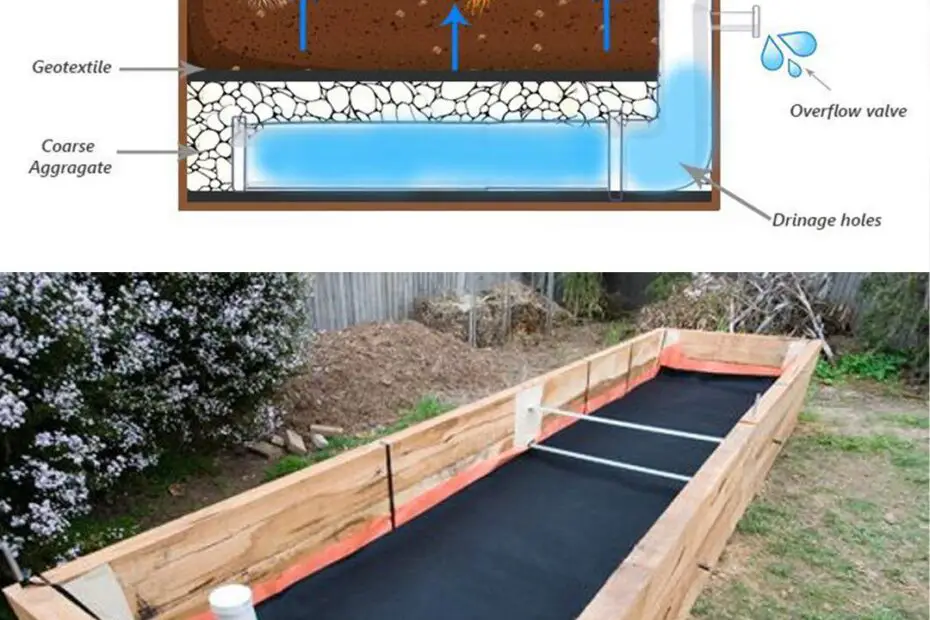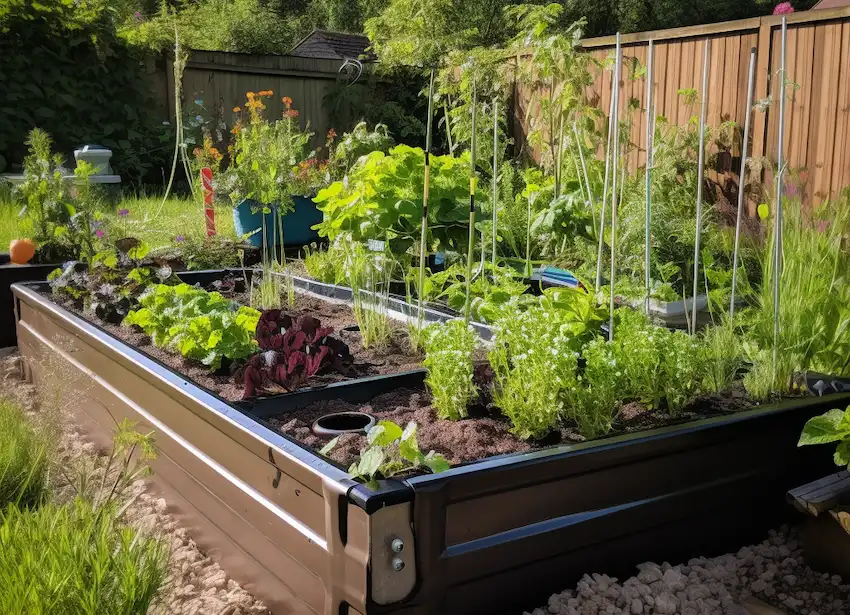
In cities where green is scarce and grey is omnipresent, the wicking bed is a beacon of sustainability, transforming limited spaces into lush, productive gardens. The wicking bed is not only an innovative way to garden in urban environments, but also a water technology pioneer in the fight against drought and water waste.

The moisture-wicking bed: An ingenious system
A moisture-regulating bed is essentially a self-watering raised garden. It’s designed to use water incredibly efficiently by allowing plants to draw moisture upwards from a built-in reservoir, reducing the need for frequent watering. The magic happens through capillary action – the same phenomenon that allows a paper towel to soak up spills. In the configuration you’ve planned, the system features an “L”-shaped tube that distributes water evenly along the length of the bed and then extends above the ground to allow for easy filling and monitoring of water levels.
Create your own garden wonder
To build a moisture-wicking bed like the one in the photo you provided, you must follow certain instructions to ensure that the water distribution system works properly:
- Choose the right container : Start with a durable container that can hold a significant amount of soil and has room underneath for a water reservoir. A custom-made wooden frame, an old bathtub, or a repurposed large planter can all serve as an excellent base for your humidity bed.
- Seal the deal : Line the selected container with a high-quality waterproof membrane to create a water reservoir. Make sure it is completely sealed to prevent leaks.
- Install the “L” shaped pipe : Lay a PVC pipe along the length of the bed on the unit. To allow for even water distribution, the pipe should be perforated along the horizontal section. It then bends upwards at one end and extends above the height of the bed to serve as a fill point.
- Aggregate layer : Fill the bottom with a layer of coarse aggregate, such as gravel, making sure it is level. This is where your water will be stored.
- Geotextile barrier : Cover the aggregate and the horizontal part of the pipe with a geotextile that prevents soil from being washed into the container while allowing water to drain upwards.
- Add soil : Pour a nutrient-rich soil mix onto the fabric. The soil should be suitable for the types of plants you want to grow, such as vegetables, herbs or flowers.
- Overflow Outlet : Install an overflow valve or overflow pipe where the ground meets the unit. This is important to prevent waterlogging by allowing excess water to escape.
- Planting and Mulching : Plant your seeds or seedlings in the bed and cover the surface with organic mulch to minimize evaporation.
- Water and Watch : Fill the container via the vertical pipe until water comes out of the overflow, then watch your plants absorb water from below and thrive with minimal maintenance.

This moisture-draining bed design is a step toward self-sufficiency and resilience in urban gardening. By adopting this method, you are committing to a sustainable future where resource conservation and eco-friendly living take root in our cities.
Inspired by this? Share the article with your friends!
